Overview
An effective brand ambassador program can be established through a structured approach that encompasses:
- Defining clear objectives
- Identifying the appropriate target audience
- Selecting ambassadors who align with brand values
- Maintaining ongoing engagement
This article delineates these essential steps, underscoring the significance of:
- Measurable goals
- Strategic ambassador selection
- Comprehensive onboarding
- Regular communication
Such elements are crucial to ensuring the program's success and adaptability.
Introduction
Building a successful brand ambassador program is a transformative strategy for businesses aiming to expand their reach and cultivate authentic connections with their audience. By strategically aligning representatives with brand values and establishing clearly defined goals, companies can forge a robust network that not only drives sales but also bolsters customer loyalty.
However, navigating the complexities of selecting the right ambassadors and sustaining their engagement over time presents a significant challenge.
How can organizations ensure that their ambassador initiatives are not only effective but also resonate profoundly with their target market?
Define Your Brand Ambassador Program Objectives
Begin by clearly defining the goals of your ambassador initiative. Shared objectives encompass boosting visibility, driving sales, and enhancing customer loyalty. To ensure these objectives are effective, apply the SMART criteria—Specific, Measurable, Achievable, Relevant, and Time-bound. For instance, rather than a vague goal like 'increase sales,' specify 'increase sales by 20% over the next six months through ambassador-driven promotions.' This level of detail not only clarifies your strategy but also aids in assessing the initiative's success. Marketing specialists stress that clearly defined objectives are essential for aligning the program with wider business aims and assessing its effect on sales and reputation.
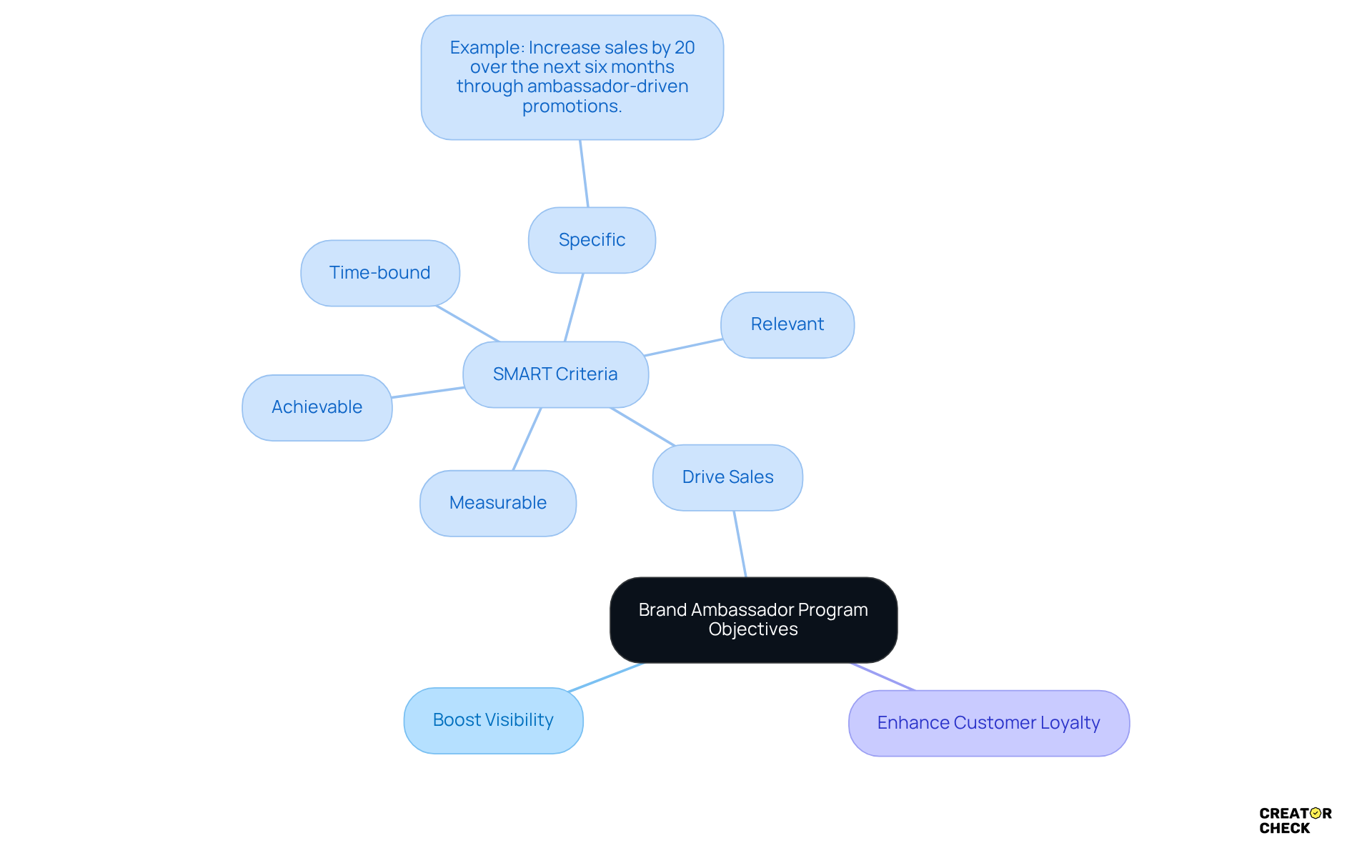
Identify Your Target Audience and Ideal Ambassadors
Conducting thorough market research is crucial for defining the demographics, interests, and behaviors of your target audience. This essential step, as emphasized by Francisco Ramirez from The ACE Group, empowers you to develop a comprehensive profile of your ideal representative. Important elements to consider include their social media presence, engagement rates, and alignment with your values.
For example, if your company targets eco-conscious consumers, it is imperative to seek representatives who actively promote sustainability and possess a proven track record of connecting with similar audiences. Statistics reveal that 82 percent of individuals are likely to act upon an influencer's recommendation, with nearly half of all consumers (49%) making purchases at least once a month due to influencer posts. This underscores the importance of selecting representatives who genuinely resonate with your target market.
Furthermore, leveraging social media analytics tools can aid in identifying influencers that align with your values and audience demographics, ensuring a more targeted approach. By adopting this comprehensive strategy, you can significantly enhance the effectiveness of your representative program, ensuring that your messaging reaches the right consumers and fosters authentic connections.
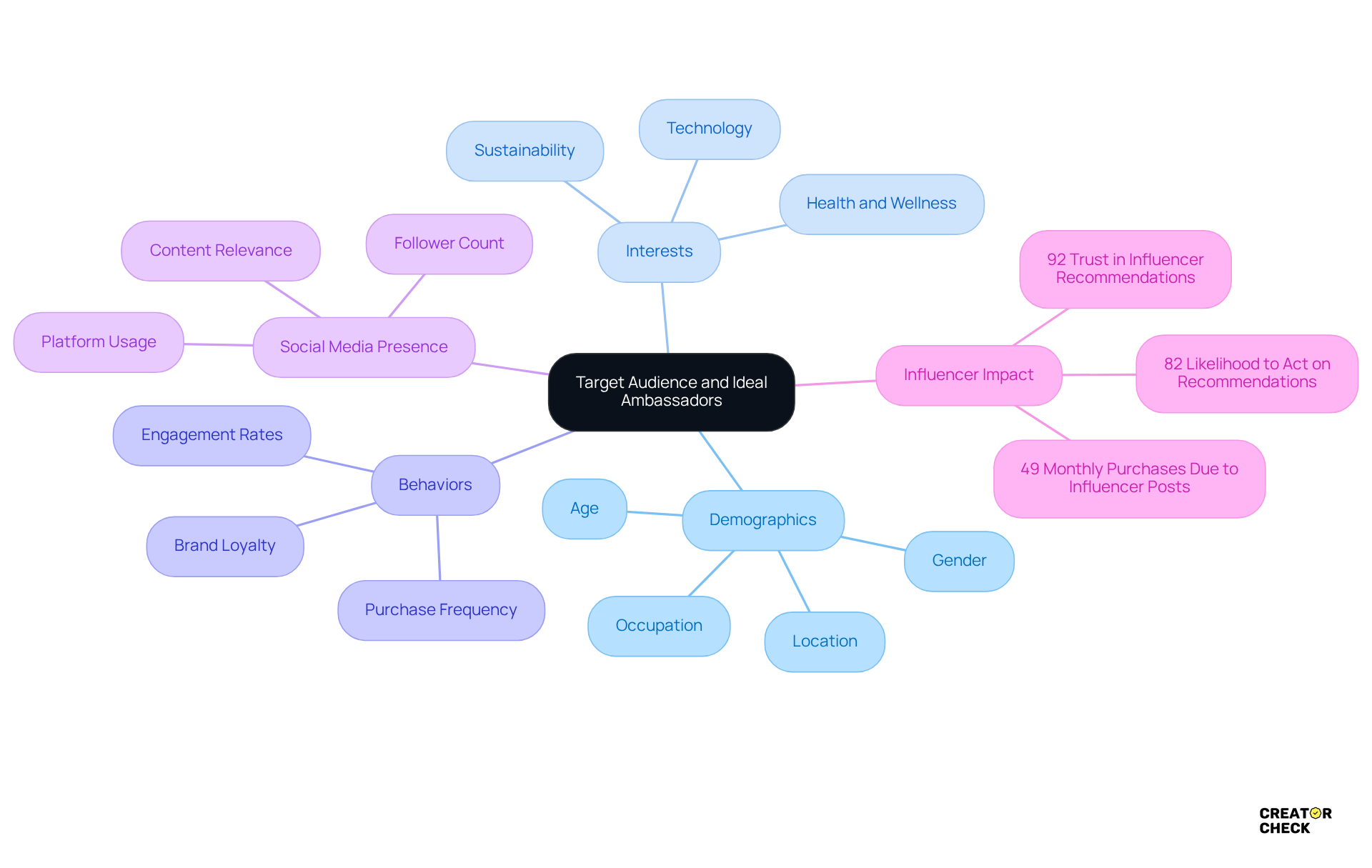
Select Ambassadors Who Align with Your Brand Values
Assess potential representatives meticulously, focusing on their content, values, and past collaborations. Seek individuals who not only possess a robust following but also demonstrate a commitment to the principles your organization embodies. For example, if your company champions health and wellness, consider ambassadors who actively share their fitness journeys or provide healthy lifestyle tips. This strategic alignment will significantly enhance the credibility of your initiative and cultivate a genuine connection with your audience.
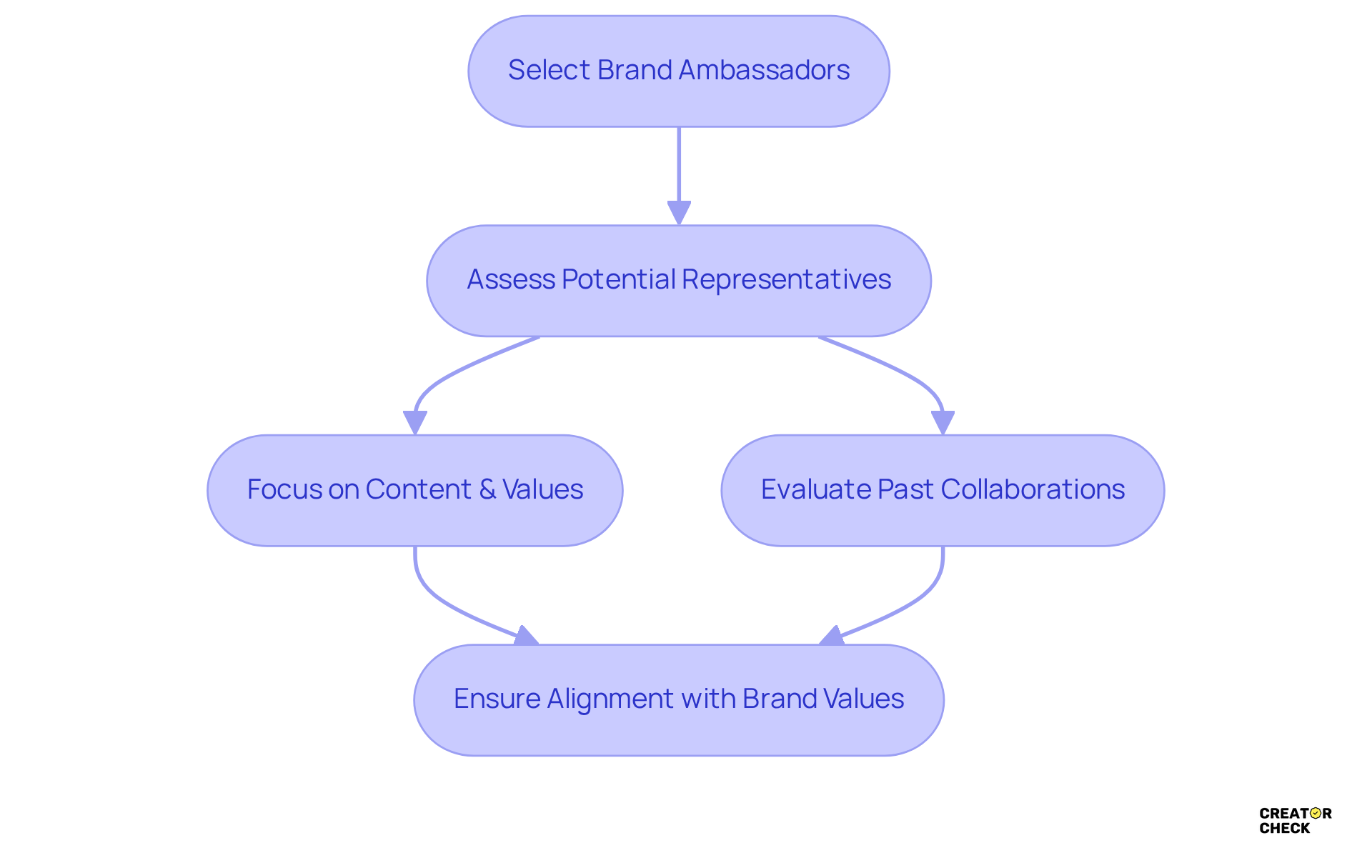
Onboard Your Ambassadors Effectively
Establishing an onboarding initiative is essential for success. This initiative should encompass:
- A comprehensive welcome kit
- Detailed brand guidelines
- Thorough training materials
Clearly outlining the program's objectives, the representatives' roles, and the metrics for success is crucial. Furthermore, consider hosting a kickoff meeting to introduce representatives to your team and provide them with the necessary resources. This initial engagement will not only make them feel valued and informed but also lead to more effective support for your organization.
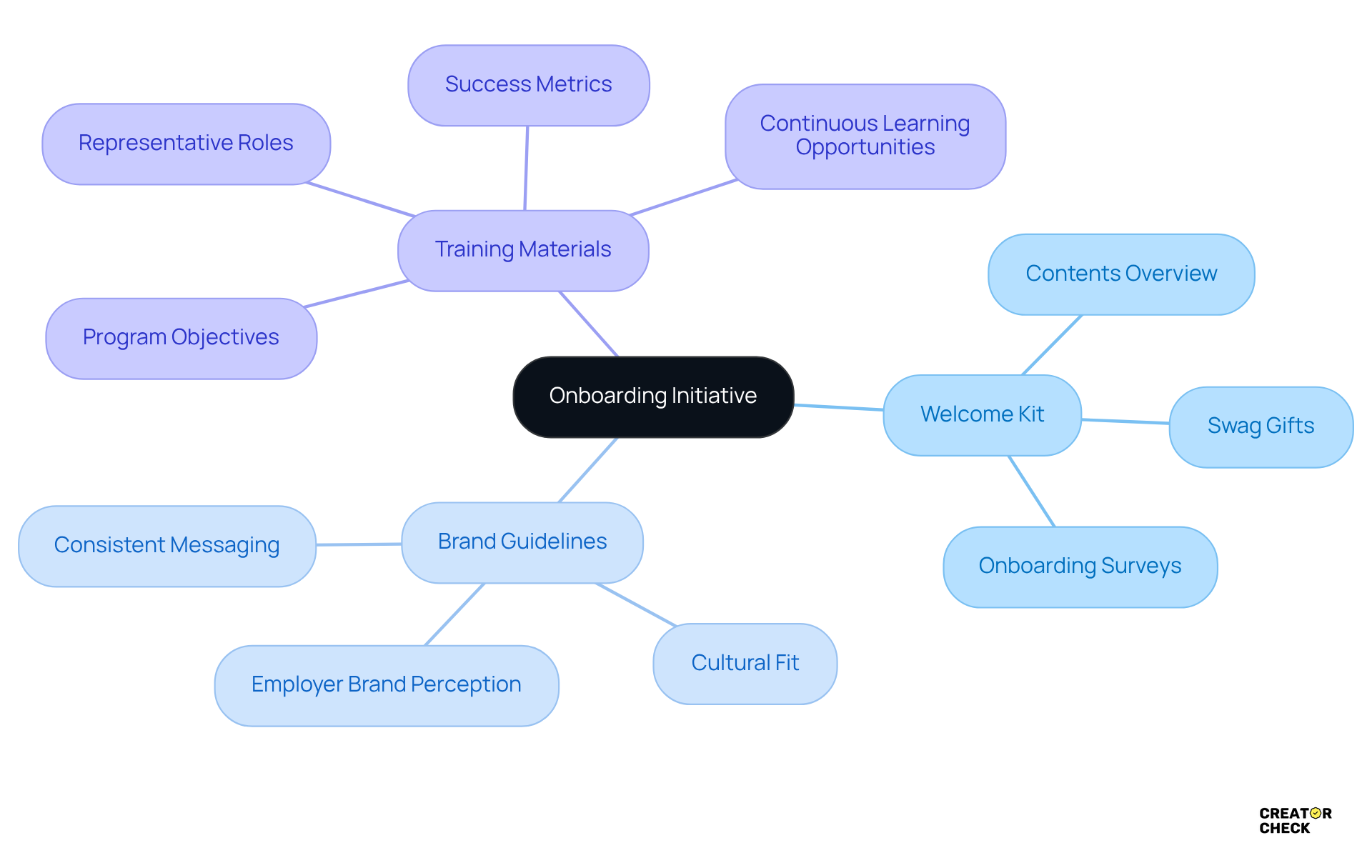
Engage and Communicate with Your Ambassadors
Establishing regular check-ins and updates is crucial for keeping representatives informed about upcoming campaigns and initiatives. By utilizing diverse communication channels—such as email newsletters, social media groups, and dedicated platforms—you facilitate interaction and foster a sense of community. Statistics indicate that 80% of adults and 91% of teens use messaging apps daily, underscoring the significance of these channels in effectively reaching your audience.
Encouraging representatives to share their thoughts and suggestions not only makes them feel like essential components of your organization's journey but also enhances their commitment. This active engagement results in more authentic and creative content, ultimately benefiting your marketing efforts.
Successful companies recognize that maintaining open channels of communication is vital for cultivating strong connections with their representatives, which can significantly influence the effectiveness of their campaigns. As Larizza de Vera observes, "You can utilize product representatives to promote your offerings and increase visitors to your website," illustrating the importance of these connections.
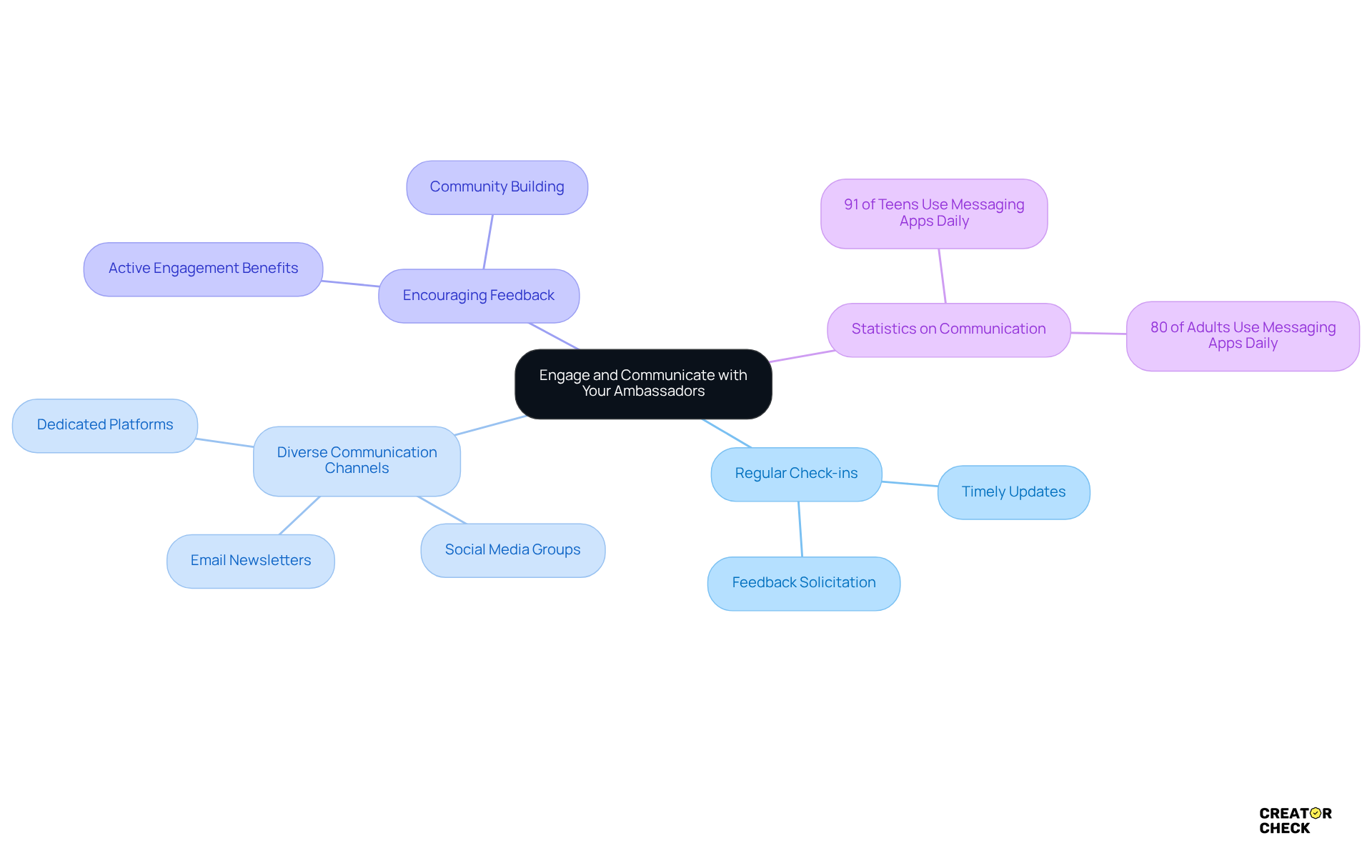
Measure Success and Optimize Your Program
Define KPIs that align with your initial objectives, such as interaction rates, conversion rates, or those relevant to your brand ambassador program. Utilize analytics tools like Google Analytics and social media insights to monitor these metrics and collect feedback from your representatives. Regularly review the data to identify trends and areas for improvement. For instance, if certain representatives are generating higher participation, consider enhancing their role in upcoming campaigns.
Furthermore, monitor metrics associated with the brand ambassador program's expansion of influence, including follower increases and engagement rates, to evaluate effectiveness. Integrating sentiment analysis and tracking brand mentions will aid in assessing the overall excitement surrounding your initiative.
With Creator Check, you can streamline your influencer agency operations by efficiently managing multiple inboxes and searching across all creator emails. This iterative process, supported by Creator Check's AI-driven solutions, will help you refine your program and maximize its impact while ensuring data privacy and security.
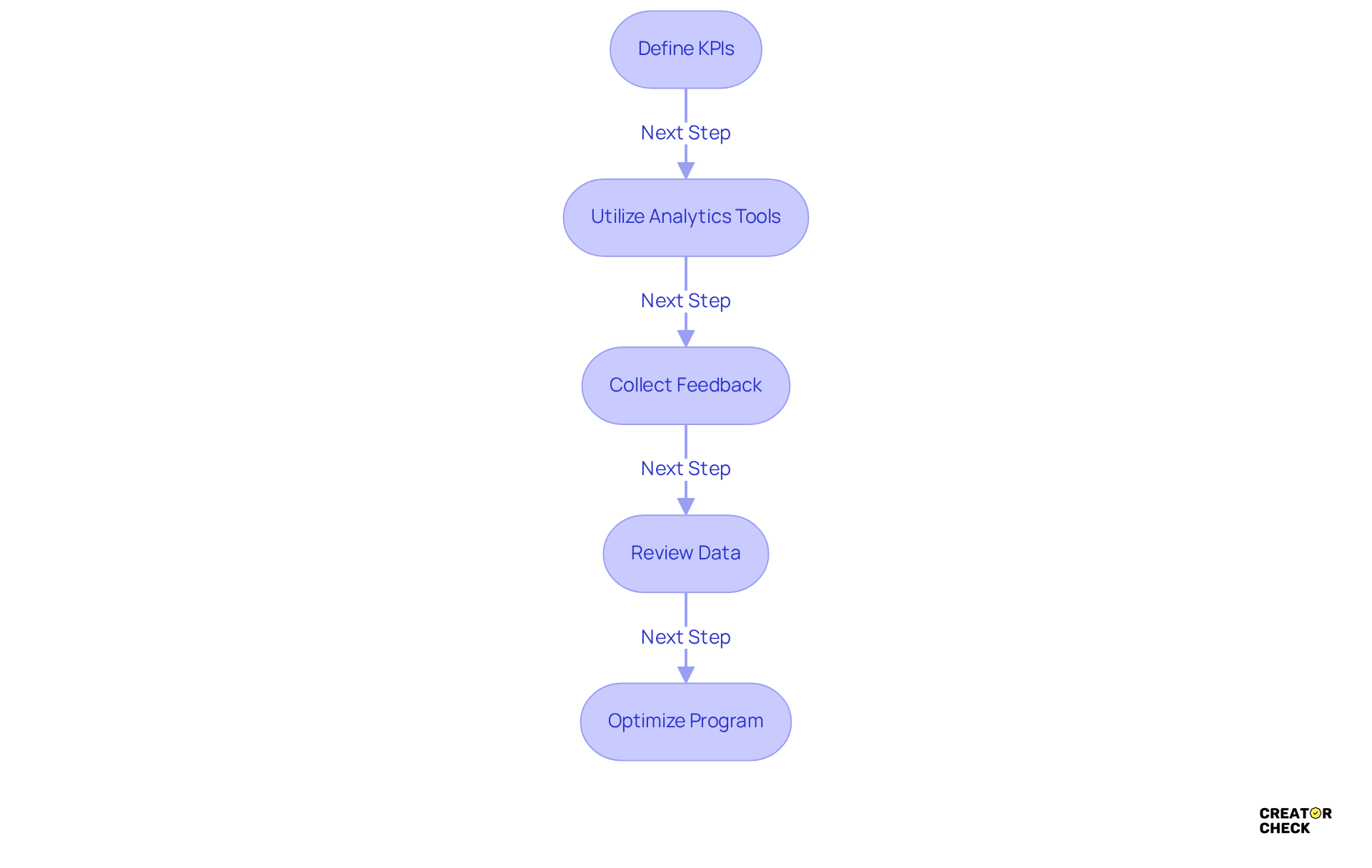
Conclusion
Building a successful brand ambassador program necessitates a strategic approach that aligns with the overarching goals of the organization. By clearly defining objectives, identifying the right audience, and selecting ambassadors who embody the brand's values, companies can create a program that not only drives visibility and sales but also fosters genuine connections with consumers.
Key steps include:
- Setting SMART goals to guide the initiative
- Conducting thorough market research to identify ideal representatives
- Implementing effective onboarding processes that equip ambassadors with the tools and knowledge they need
- Maintaining open lines of communication
- Regularly measuring success through relevant KPIs to ensure that the program evolves and improves over time
Ultimately, a well-executed brand ambassador program can significantly enhance brand loyalty and influence consumer behavior. By prioritizing strategic planning and continuous engagement, organizations can harness the power of authentic advocacy to propel their brand forward. Embracing these practices will not only optimize the effectiveness of the program but also solidify the brand's presence in the marketplace.
Frequently Asked Questions
What are the main objectives of a brand ambassador program?
The main objectives of a brand ambassador program include boosting visibility, driving sales, and enhancing customer loyalty.
How can I ensure that my program objectives are effective?
To ensure effectiveness, apply the SMART criteria—Specific, Measurable, Achievable, Relevant, and Time-bound. For example, instead of a vague goal like 'increase sales,' specify 'increase sales by 20% over the next six months through ambassador-driven promotions.'
Why is it important to define objectives for a brand ambassador program?
Clearly defined objectives are essential for aligning the program with wider business aims and for assessing its effect on sales and reputation.
How can I identify my target audience for the ambassador program?
Conduct thorough market research to define the demographics, interests, and behaviors of your target audience. This helps in developing a comprehensive profile of your ideal representative.
What should I consider when selecting ideal ambassadors?
Important elements to consider include their social media presence, engagement rates, and alignment with your values. For instance, if targeting eco-conscious consumers, seek representatives who promote sustainability.
What is the impact of influencer recommendations on consumer behavior?
Statistics reveal that 82 percent of individuals are likely to act upon an influencer's recommendation, with nearly half of consumers (49%) making purchases at least once a month due to influencer posts.
How can social media analytics tools assist in identifying ambassadors?
Leveraging social media analytics tools can help identify influencers that align with your values and audience demographics, ensuring a more targeted approach for your representative program.




